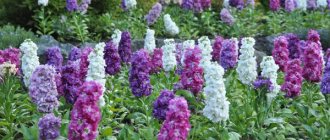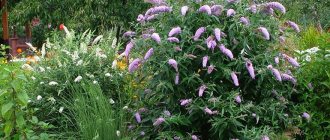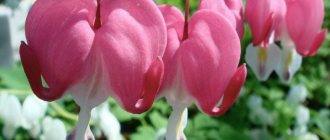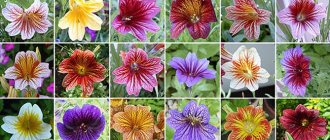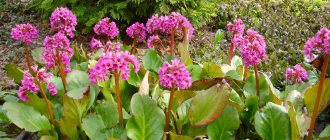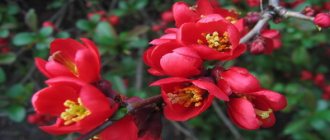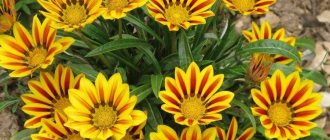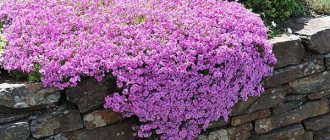During the flowering period of quince, the tree can be considered an ornamental crop - it is so beautiful.
However, the appearance of flowers speaks not only about beauty, but also about many other factors: the condition of the plant, the upcoming yield, or the wrong place for planting.
This is why it is so important to pay attention to the quince calyxes, because with knowledge you can prevent deterioration in the health of the tree.
Description of the plant
Quince or Japanese chaenomeles (Chaenomeles japonica) is a species of perennial plants from the genus Chaenomeles of the Rosaceae family, usually deciduous shrubs. The plant comes from Japan and is grown in Europe and China.
The first Japanese chaenomeles was planted in Europe in 1796 at the Royal Botanic Gardens, Kew (UK). It was brought by Joseph Banks (1796-1820), a famous British botanist, plant hunter and director of the Royal Botanic Gardens at Kew. Seedlings of the species appeared on sale in 1870 in Great Britain.
The generic name Chaenomeles is related to the anatomy of the fetus - it comes from the Greek words:
- χαίνειν chainein (to break, open);
- μῆλον mēlon (apple).
There are 4 known species of the genus Chaenomeles, of which they are grown in our country:
- Japanese chaenomeles (Chaenomeles japonica);
- Chaenomeles speciosa – native to China and Tibet;
- Chaenomeles superb (Chaenomeles ×superba) is a hybrid of Japanese chaenomeles and beautiful.
Botanical description:
- A thorny shrub 1-2 m high.
- Escape. Young shoots are scaly, green, widely spaced, branched to the sides. Old branches are bare and turn brown. Young shoots are not leafy; on old shoots you can admire small green ovoid leaves.
- The leaves are ovate or spatulate, up to 5 cm long, sharply serrated with large, serrated stipules. The leaves fall off for the winter.
- Flowers – numerous, salmon-pink or orange-reddish with numerous stamens.
- Fruit – spherical, aromatic, edible, light yellow when ripe, sometimes with red spots. Ripen in October. They can fall or remain on the bushes all winter, providing valuable food for birds.
When grown, Chaenomeles bushes reach a height of no more than one meter, but, planted individually, they can significantly exceed these dimensions. Already in early spring, numerous flowers appear, which are most often red, but depending on the variety they can take on an orange, pink or salmon color. The aroma of flowers is not impressive, it is heavy, without a sweet note, but attracts insects.
After flowering, fruits are set, which take a very long time to ripen. After leaf fall, fruits up to 4 cm in diameter appear golden on leafless bushes, and only in late autumn are they ready for harvest. Since they do not have stalks, they look like they are glued to the shoots. The fruits are bright yellow, sometimes slightly speckled, hard, shaped like small apples, and very sour in taste. They are characterized by an intense aroma that spreads very quickly throughout the room in which they are stored.
The plant is not self-fertile. The flowers are pollinated by pollen of other types of quince (fine, Japanese, excellent). In practice, it is not always necessary to plant 2 different varieties in the garden. It is enough if your neighbor grows quince.
Due to its flowering time, quince is an ideal honey plant. Flowers provide nectar and large amounts of pollen, stimulating the intensive development of bee colonies.
What does a flowering tree look like?
The flowers are considered regular, in most cases solitary. They are located on fairly short pedicels of a tomentose-pubescent nature. The calyx itself is five-parted and remains attached to the fruit.
Color may vary in the following items:
- white;
- pale pink;
- pink.
The flower size is relatively large, ranging from 4.5 to 5 centimeters in diameter. The petals forming the calyx are obovate and have a short nail.
Photo
Blooming quince:
Botanical characteristics
Pistil with a lower five-locular ovary, which is fused with the hypanthium. The pestle has five :
- Stolbikov. They are distinguished by an oblique, notched stigma, and are densely pubescent.
- Carpels. They are characterized by the presence of glandular-serrated edges.
- Sepals. They are considered solid and oblong, as well as bent.
The number of stamens in one quince flower varies from 15 to 25, but in most cases the number takes an average value of 20.
Interesting varieties
- "RedJoy" Red Joy is a thorny deciduous shrub that grows up to 50 cm. The leaves are small and shiny. The flowers are large, 3 cm in diameter, red, fragrant, appear in March-April, before the leaves develop. Red Joy fruits are edible, yellow, aromatic. Chaenomeles loves sunny or slightly shaded places and moist soil. Suitable as an original decoration for small gardens, for planting in public places, and for constructing low hedges.
- “Sargenta” Sargentii - the variety has a wide crown, reaching 1.5 m in width and 0.8 m in height. Before small leaves appear, bright orange flowers will bloom on the thorny bush in March-April. It bears fruit in the fall; large greenish-yellow fruits with a red blush are used in jelly, for making tinctures and wine.
- "Sido" Cido - the shrub produces bright yellow fruits containing vitamin C and pectin. Fruits are used to make wine, delicious liqueurs, and jellies. The "Sido" variety grows up to 1 m in height and 2 m in width. Growing requirements: a warm, sunny position with a moderately moist substrate. Care consists of trimming lush side shoots.
- «Calif" - a variety bred in the Donbass. Can reach a height of 2 meters, non-thorny. The flowers are white with pink spots. Fruits weigh about 100 g. Resistant to frost, drought, and pest damage.
Growing conditions
Quince is very easy to grow and has extremely small requirements.
The preferred soil for quince is as follows:
- fertile;
- moderately humid;
- the reaction is preferably neutral (pH 6-7);
- prefers heavy soils.
The bushes can cope with conditions in almost any location. They do not like saline and swampy soils. They do not tolerate areas where water remains for a long time during the growing season. The shrub reacts to stagnant water with a significant reduction in growth and disease.
On alkaline and dry soils, quince is susceptible to chlorosis associated with poor absorption of iron. Then acidification with sulfur or iron sulfate is recommended, but it is more effective to apply iron chelates to the soil or in the form of foliar feeding “on the leaf.”
For intensive flowering and fruiting, you need to provide good access to sunlight. The plant loves the sun, so it should not be placed on the north side of buildings or under tree canopies. Shrubs growing in the shade are sparse, poorly leafed, and produce few flowers.
The plant grows best in warm regions where the risk of frost is low. Quince should be given a warm, protected place. A shrub grown in good conditions produces a good harvest with excellent taste.
Diseases and pests of ornamental bushes: if the leaves dry out and turn yellow
Despite the unpretentiousness of the Japanese quince, it can be susceptible to diseases and pest attacks, which leads to drying of the leaves, followed by their premature falling, lack of normal flowering, etc.
Aphids cause the most trouble: when they appear, it is better to immediately use chemical or biological insecticides (Fitoverm, Biotlin, etc.). Other insects (for example, codling moth) and mites rarely attack quince.
Quince is harmed by the same aphid that harms apple trees.
Among the diseases that are especially common in cold and rainy summers are:
- leaf necrosis (starts with a gray coating, then the leaves dry out);
- ramularia (brown spots on leaves);
- cercosporiosis (dark brown round spots that quickly cover the entire leaf and lead to its death).
The main remedies for treating quince diseases are Fundazol and Bordeaux mixture. They also save the bush from moniliosis and powdery mildew. For preventive purposes, spraying is carried out two weeks after the end of flowering, and then again a month later.
Landing
When to plant quince? Bare-root seedlings should only be planted when the plants are dormant:
- autumn: October – December,
- spring: March – April.
Compliance with these deadlines will give the best survival of plants in a new place.
You need to ensure that the substrate is slightly moist and free of weeds. Before planting, you need to prepare the site - dig up, select weeds, add compost. The hole for the seedling should be 30-40 centimeters deep.
Seedlings with a closed root system (in containers) can be planted at any time except winter
Bushes are planted at a distance of 2.5-3.5 m from each other (row spacing) at 0.75-1.5 m in a row. The best effect is obtained by planting Japanese quince in rows, at a distance of 1 meter, if we want to get the effect of a continuous low hedge.
A freshly planted bush should be watered abundantly.
Characteristics
Chaenomeles loves sun, light partial shade is also suitable. In the shade the plant grows poorly and develops slowly. The place must be protected from winds, as wind negatively affects the flowering of the plant.
Japanese quince loves warmth, is relatively winter-hardy and does not tolerate severe frosts . As the bush matures, its winter hardiness increases.
In the southern regions, Japanese quince can withstand the winter without shelter, but if the shrub is grown in the middle zone, in Siberia or the Urals, then it must be covered with snow or additional shelter must be used. In frosty winters, the ends of young shoots may freeze.
Growing and care
Japanese quince is considered an undemanding shrub. It grows well without special care and can even withstand drought. However, care should not be neglected completely. The shrub does not tolerate weed competition well, especially at a young age, so you need to regularly remove them and mulch the soil.
Watering
There is no need to water frequently. During drought, young bushes can be watered once every 2-3 days to support their growth. Moderate humidity of the substrate should be maintained; adult plants will survive the dry period without problems. But the shrub blooms and bears fruit more profusely when the soil does not dry out too much.
The earth should be mulched with bark so that it does not quickly lose moisture and does not become clogged with weeds.
Feeding
It is worth feeding the quince with rotted compost annually or once every 2 years, and the young bushes with nitrogen fertilizers in the spring.
Autumn care, preparation for winter
Planting and caring for quince in the Moscow region will be easy, just carefully cover its branches from frosty gusts of wind; in the spring there is no need to fear unpleasant surprises. Japanese quince grows in Siberia and the Urals and is one of the most frost-resistant shrubs. However, in Siberia it can bloom only on the lower branches, so summer residents form the bush so that the branches are closer to the ground. For the conditions of Siberia, the low-growing varieties Nikolina and Jet Trail are better suited. During winter, it is worth properly covering its roots with agrofibre or bark.
During severe winters, branches not covered with snow may freeze, but after pruning the bushes usually grow back.
Trimming
One of the most important maintenance methods when growing Chaenomeles japonica is pruning. Immediately after planting, we shorten all the branches to stimulate the bush to develop, speed up acclimatization in a new place, and control the shape of the plant from the very beginning.
The next pruning of quince is carried out in the spring, in March. Weakened, overgrown shoots are completely cut off. It is necessary to regularly trim stems that are too long and shoots that do not bear fruit. It is recommended to cut them in half. It is also necessary to remove old branches and those parts of the plant that overly compact the bush or are affected by disease.
Diseases and pests
Quince is relatively resistant to diseases and pests in our climate. However, in unsuitable conditions it can hurt. The most common diseases are the following:
- Moniliosis of fruit crops - brown, fast-growing spots of rot appear on infected fruits, and on them are characteristic concentric beige-gray warts on which conidial spores form. The rotten fruit dries up and remains on the tree in the form of a brown-black mummy until next spring. It is necessary to spray 2-3 times, starting from the June fall of the ovaries, with copper oxychloride (the drug Hom) or another copper-containing fungicide.
- Powdery mildew - a white powdery coating appears on the entire surface of tissues developing from infected buds. Severe infection of leaves inhibits their growth, then leads to deformation and drying out. The fruits have a white powdery coating, which later turns into a reticulated browning. Effective drugs: Topsin M 500 SK.
- Pear scab – the first symptoms appear as olive-green, velvety, uneven spots. Then the spots become dark brown, black with clear edges. Heavily infected leaves curl, wrinkle, and the spots on them merge into large clusters, often located along the main vein. As the fruit grows, the spots become dark brown and corky. The first spraying should be carried out in March with Hom. Effective drugs for treatment are also: Evaziol, Lecitek, Medzian Extra 350 SK, Poliram 70 WG.
- Bacterial canker of fruit trees - in early spring, irregularly shaped spots appear on the trunk, branches, and young shoots. Sometimes characteristic cracks are observed in the upper layer of the bark. Frostbites contribute to the development of the disease. During leaf fall, spray with the following preparations: Miedzian Extra 350 SC, Miedzian 50 WP.
- Bacterial burn of fruit crops - the affected flowers are at first as if saturated with water, then quickly wither, shrivel, and die. Young green shoots wither on top, turn brown over time, and die. Dark green spots appear on the fruit buds, which then turn red-brown. Rotting appears on the branches and trunk. At the site of infection, the bark collapses and dries out. Spraying: Hom, Topsin M 500 SC at the stage from bud swelling to flowering and during the growth of fruit buds.
The most common pests of quince:
- Aphids - when they appear, the leaves and shoots curl. The pest produces a large amount of honeydew, which infects shoots and fruits. Immediately after the first symptoms appear, fight with the following drugs: Karate Zeon, MKS.
- Fruit spider mite - during the growing season, small light spots first appear on the leaves, which merge into large spots. Damaged leaves turn brown, dry out, and fall off. The fruit does not grow and does not color. Flower buds set worse the next year. Carry out 2 treatments (before flowering and in early June) with Karate Zeon, MKS or another drug with an acaricidal effect.
Features of fruiting
How quince blooms can be seen in the third or fourth year after planting it on the site, but whether this will lead to the appearance of fruit depends on several reasons. This culture is not self-fertile or conditionally self-fertile, as some experts cautiously express.
This does not mean that plants are divided into male and female, but pollen from a tree of a different variety is needed for proper pollination. Although modern varieties do not require cross-pollination, according to the claims of their creators, it often happens that a profusely and regularly flowering quince bush or tree does not produce a single fruit with proper agricultural practices. In this case, the situation can be saved by planting a quince of a different variety nearby or grafting on the same tree. Sometimes quince is grafted onto a pear tree that grows on the site, which helps improve the yield of both crops. Some gardeners claim that for cross-pollination it is enough to have distant relatives of the quince - apple and pear - in one area, but maybe they just came across a truly self-fertile variety.
Another reason that a quince blooms but does not bear fruit may be frost damage to the pistils and stamens. To verify this, just look inside the flowers. But the cause is frost hitting the green cone. The green cone is the period when the leaves have not yet formed, and the buds have already acquired moist softness and a blunt green tip, which is about to open with the first leaves. Quince blooms late, when the average daily temperature exceeds +17 degrees; usually there are no return frosts at this time (May or even June), so people do not suspect that frost can damage the flowers.
Differentiation of buds into leaf and fruit buds occurs in autumn (October - November) and spring (March - May), externally they do not differ in any way. It’s just that when the time comes, flowers grow from the axils of some leaves. So at the green cone stage there are already fruit buds that are more vulnerable and delicate than all the others; frost can easily damage them. If the cold already arrives in October, then the main work remains for the spring; a return frost can ruin it. It’s not for nothing that experienced gardeners monitor the air temperature and are ready in April or even May to save tree branches by fumigating them in order to protect them from frost with smoke.
Many gardeners in the spring, before the buds open, carry out preventive treatment against diseases and parasites, called blue spraying. The entire tree is sprayed with Bordeaux mixture, which has a beautiful blue color, this delays the appearance of the first leaves for some time, that is, the period of the green cone begins a little later, thereby bypassing return frosts. This helps protect future flowers, a bonus or side effect in protecting against diseases.
Reproduction
There are 3 ways to obtain young Japanese quince seedlings:
- seeds,
- cuttings,
- root suckers.
Seeds
The most difficult way to propagate quince is by sowing seeds. You can sow seeds in pots all year round.
For good germination, the seeds need preparation - you need to soak them in water for 24 hours and stratify (cool) in the refrigerator for 60 days at a temperature of 5 °C.
Seeds for stratification are placed in a substrate prepared from clean, wet sand or sand mixed with peat in a 1:1 ratio. The ratio of seeds to substrate is 1:3, they are mixed so that individual seeds have less contact with each other. The mixture of seeds and substrate is placed in plastic containers or ziploc bags. Every 2 weeks and in the last month of stratification, the contents of the container should be stirred, ventilated, and, if necessary, moistened. After the first shoots appear, stratification stops and the seeds are sown in pots or open ground.
Further actions depend on the time of year:
- in spring we sow directly into the ground;
- in the fall - the seeds are sown in containers and only in the spring the seedlings are transplanted into open ground.
Seedlings are sown in pots with regular garden soil, placed in a warm place, and protected from drying out. The resulting seedlings do not exactly inherit the characteristics of the mother plant; if maintaining the variety is important, then the seedlings are then grafted using the budding method.
Cuttings
Most often, quince is propagated by cuttings. Half-ripe cuttings are used. The shoots are cut at the end of June - beginning of July. Young shoots of this year are chosen. Immediately after cutting, they are dipped in a preparation that stimulates the formation of roots and planted in loose, moist soil. After a few weeks, roots of the right size should appear to allow the plants to be transplanted to their destination.
Root suckers
Old specimens tend to grow laterally with the help of root suckers. Usually the shoots are cut with pruning shears (preferably underground).
The easiest way of propagation is to cut off the offspring from the mother bush, which often appear when growing quince. You can immediately plant them in the chosen place in open ground.
Useful properties of Japanese quince
It’s not enough to say that Japanese quince is healthy. She is unique in her qualities! Its vitamin C content makes it a leader among other fruits and berries; it is ahead of the well-known lemon and black currant.
In addition, small and sour apples contain pectin, fiber and numerous organic acids, carotene. Eating it helps remove salt from the body, strengthens blood vessels and cleanses the intestines.
Traditional healers are attracted to this fruit as a wonderful restorative drug, which has antiviral, anti-inflammatory and diuretic effects.
However, it should be noted that there is still debate about the benefits and harms of Japanese quince. Due to its high acidity, its use is contraindicated for stomach ulcers, as well as for those prone to constipation.
Doctors have noticed that “northern lemon” has a bad effect on the vocal cords, so singers and announcers should not overuse this aromatic fruit.
Application
Japanese quince was grown in our country decades ago. The bush attracts attention mainly in March-April, when flowers with unusually beautiful petals appear on thorny branches. There are many options for its use in many areas of life: gardening, landscape architecture, culinary arts, natural medicine, cosmetology.
Ornamental plant
Since quince blooms very abundantly and the flowers are brightly colored, the bush can be successfully grown to decorate gardens, roads and busy streets, where growing conditions are quite harsh. It beautifully decorates parks, classic and rocky gardens, terraces or balconies.
Quince bushes compact easily; when planted side by side, they form a compact structure. Proper formation will allow you to get a very interesting effect of a hedge, which is showered with flowers in early spring, and yellow fruits in the fall. Quince hedges decorate gardens and effectively protect against uninvited guests with thorns and dense branches. Even heavily pruned bushes bloom and bear fruit on old branches.
Tall, long, dramatic hedges can be created by combining quince with forsythia, ligustrum or barberry. Low-growing varieties are usually planted in uniform rows, for example, along alleys. On a meter-long plot you need to plant 3-5 bushes, depending on their growth vigor.
Ornamental Japanese chaenomeles is planted on slopes; it strengthens the soil well thanks to its very deep roots. Therefore, the bush is difficult to remove from the site.
You can even grow quince as bonsai - miniature trees that bloom in the second year of cultivation.
Duration
Normal quince flowering lasts for three weeks .
Under favorable conditions, regular watering and warm temperatures, this period can be extended to a month. The type of tree also plays a certain role. Quince, cultivated in Transcaucasia, has a longer flowering time compared to European varieties.

